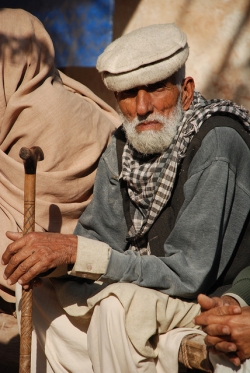 “Attempt five questions in all, question number one is compulsory”…
“Attempt five questions in all, question number one is compulsory”…
At medical school we used to leave the difficult exam questions until the end or not bother at all, if we had the choice.
While going through the draft of the 2009 National Health Policy, I realised that maternal and child health is question number one and compulsory.
On the other hand, tackling non-communicable diseases (NCDs) in Pakistan is in fact the difficult question, which is left out on purpose or attempted half-heartedly by policy makers.
Double burden
The wake up call has arrived: Recent reports looking at NCDs have found that there is a double burden of disease in Pakistan: 38.4% being infectious and 37.7% non-communicable. NCDs even outnumber infectious diseases with the added percentage of injuries (11.4%).
However, in a country with 33% of the population living below the poverty line and 75% of the money spent on disease treatment paid out of pocket, we are still struggling with infant (74/1000) and maternal mortality (350/100,000) as well as communicable diseases.
As a result, non-communicable diseases have not been able to find a place on the health agenda yet.
A serious omission
The fact that NCDs do not feature explicitly in the Millennium Development Goals (MDGs), nor are there indicators that are related directly to these diseases, means that governments and donors often pay less attention to them. Even the global health agenda fails to address this issue effectively.
Dr. Leslie Ramsammy, president of 61st World Health Assembly said: “The MDGs…failed to identify non-communicable diseases, in spite of the fact that these diseases account for 60% of global mortalities. Most of the morbidity and mortality caused by NCDs is preventable…I propose we seriously consider an MDG+, which would set goals for non-communicable diseases.”
Then the floods came…
After the devastating floods in Pakistan last summer, which affected 18 million people, all the world’s major health actors showed up to help disaster struck areas. The health cluster, a forum which addresses health issues in emergencies, failed to look at the question of NCDs, especially in older people, despite the fact that they are the most vulnerable group in disasters.
HelpAge not only participated actively in flood relief activities but became very vocal in addressing older people’s health issues in cluster meetings.
Sidelined by public health planning
The World Health Organisation projected chronic diseases as the leading cause of disability in the world by 2020. With life expectancies around the world increasing, more and more people are living with chronic diseases over decades. However, older people who are immensely affected by NCDs are always sidelined in public health planning.
Unhealthy ageing?
The World Bank’s latest report “Tackling non-communicable Diseases in South Asia” is very important in terms of drawing attention to the much neglected issue.
It says: “Aging is occurring rapidly but often without the social changes such as improved living conditions, better nutrition, gains in wealth, and better access to health services that accompanied aging in most developed countries decades ago.
“However, population aging in South Asia is associated with a rapid increase in health problems such as heart diseases, cancers, diabetes, and obesity – in other words, unhealthy aging is putting new pressure on health system.”
Scanty funding for chronic diseases
Although the scale of the problem is daunting, most NCDs are preventable and manageable. To make an impact, however, long term interventions are needed. And in country like ours where a meager budget is spent on health, international donors are vital in supporting the preventive strategies designed by the government and NGOs.
Shockingly though, new research from the Center for Global Development has found that barely 0.9% of foreign aid and philanthropic spending on health addresses these often overlooked diseases.
 Solutions
Solutions
I talked to the authority on the subject in Pakistan: Dr Sania Nishtar, the president and founder of Heartfile, the first NGO to develop an integrated national plan for NCDs in developing countries.
Dr Nishtar said: “There needs to be a transformational shift in country public health planning to give attention to NCDs in programming and policy priorities.
“In the health systems space, there is a need to integrate NCDs with the delivery of essential services. The availability of these services can have a major impact on the quality of life of older people, where there is a big link between NCDs, morbidity and disability.”
Change is in the air
Now that NCDs have been given global attention for the first time, we really look forward to seeing a major policy shift to support and prioritise their importance.
It’s time to act. We cannot ignore the fact that older people are suffering from life threatening, but preventable, diseases.
I hope the United Nation General Assembly’s special session on NCDs in September 2011 will come up with something substantial to improve older peoples’ health.
Find out more about our work on older people’s health and in Pakistan
